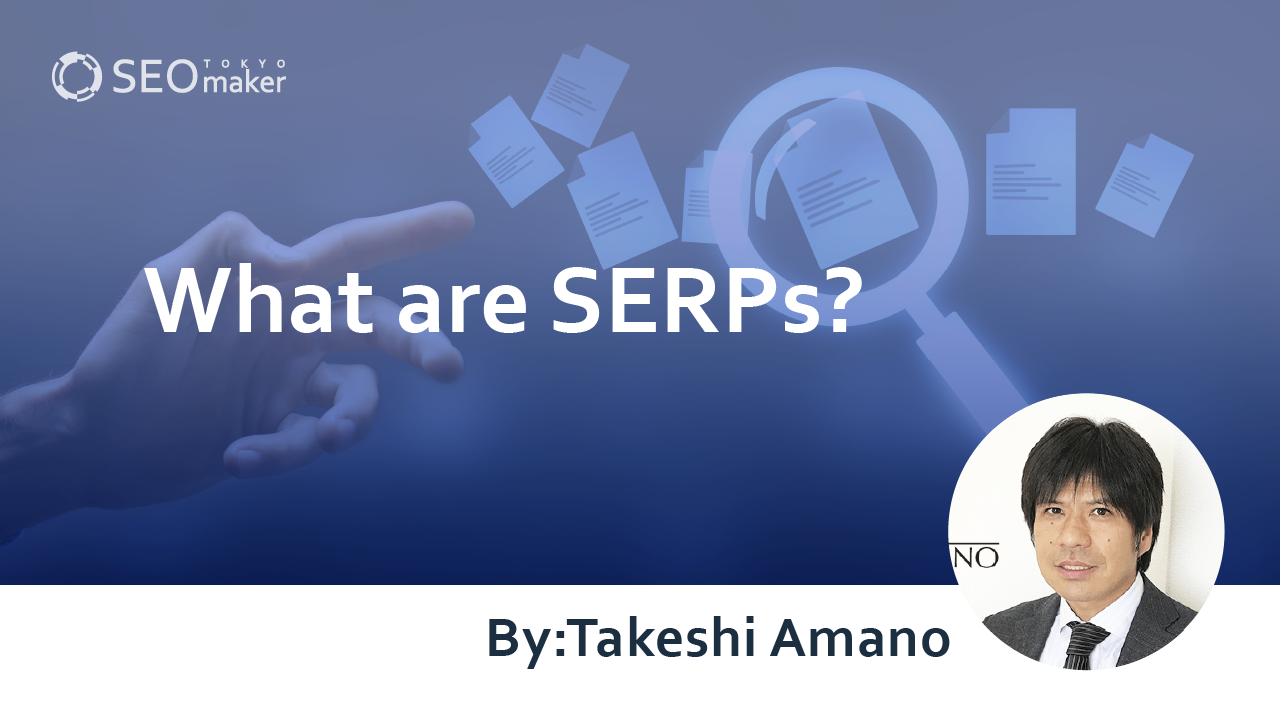What are SERPs? : Explaining Strategies
contents

For those managing websites and aiming to increase traffic, understanding and effectively utilizing SERPs is crucial.
SERPs stands for Search Engine Result Pages and refer to the pages displaying search results on search engines like Google or Yahoo!.
Analyzing SERPs allows you to understand various methods for displaying your website in search results and enables you to take necessary SEO measures.
In this article, we’ll explain the overview, structure, and displayed information of SERPs, so you can apply this knowledge to your future SEO strategies .
What are SERPs?
SERPs (Search Engine Result Pages) are the pages that display search results from search engines such as Google and Yahoo!. Google continuously improves how search results are displayed. Although there are various types of SERPs, the main components can be broadly divided into two: the listing advertisement section and the organic search (SEO) section.
SERPs consist of listing advertisement sections and organic search (SEO) sections. The listing advertisement sections are displayed at the top and bottom, with the organic search content displayed in between.
In the organic search section of SEO, website titles and descriptions (often based on meta descriptions) are displayed based on specific search queries entered by search engine users.
The display order in the organic search section is determined by Google’s proprietary algorithm, with sites ranked in order of relevance. Sites appearing at the top of the search results are considered to be evaluated more favorably by Google than those appearing lower down.
Websites that appear at the top of SERPs are more likely to catch the attention of many people, leading to an expected increase in website traffic. Therefore, SEO consultants and web marketing professionals aiming to drive traffic to their websites from search results need to make continuous efforts to understand SERPs trends.
SERPs Keep Evolving
Google’s SERPs display sites based on Google’s proprietary algorithm. In the early days, SERPs only showed organic search results, but in 2002, Google introduced search-linked advertisements. These listing ad sections appear at the top or bottom of organic search results, depending on the advertiser’s investment.
With the diversification of search engine users, the evaluation methods for sites continue to change, and the display methods for search results also evolve to match the search trends of users.
Currently, various types of SERPs can be observed, including search-linked ads (listing ads), SEO sections, vertical search results, knowledge panels, video sections, Google Shopping sections, Google for Jobs, and more (To be explained later).
Components of SERPs
While there are various types of SERPs, the main components include;
- Listing ad sections
- SEO sections
- Vertical search
- Universal search
- Personalized search
- Rich results
- Answer boxes
- Live results
- Google Shopping
- Google for Jobs
- Others also searched for
- Others also asked
The main components are broadly divided into listing ad sections and organic search (SEO) sections. Ad sections display results based on advertisers’ investments, while organic search results appear in prominent locations above or below ad sections. The display order is determined through bidding.
Organic search (SEO) sections display sites that are publicly available on the internet, as stored in the search engine’s database.
Now, let’s delve into explaining other types of SERPs.
Vertical Search
Vertical search allows users to refine their search by categories such as “images,” “videos,” “news,” and “shopping,” displayed below the search box.
The displayed categories are not fixed and vary depending on the search query (search term).
Vertical search provides valuable insights into how users are searching for specific purposes related to search queries.
Universal Search
Universal search refers to information other than websites displayed in search results.
The content displayed includes categories similar to those in vertical search, such as “images,” “videos,” “news,” “shopping,” and “maps.”
Common displays include “Knowledge Panels,” which summarize information related to the search keyword on the right side of the display screen, and “Local Packs,” which appear when searching for region-related keywords.
Knowledge Panels (Knowledge Graph)
The Knowledge Graph refers to a database that aggregates information into knowledge. Information extracted from the Knowledge Graph is displayed in elements such as Knowledge Panels in SERPs as information related to search terms.
Knowledge Panels aggregate related information from search terms. They appear alongside search results and display information related to the search term, such as Wikipedia content or images.
Local Packs
The candidates displayed in Local Packs are selected based on relevance to keywords (matching with the keywords), distance (distance from the search location to the store), and visibility (completeness of online information and SEO ranking etc.).
The source of information displayed in Local Packs is Google My Business, so if you want your store to be displayed, make sure to implement MEO strategies .
Personalized Search
Personalized search is a feature that displays search results based on the content users have searched for in the past, aiming to provide optimal results for the user.
The content displayed on SERPs is automatically customized based on the user’s interests and preferences, so the content of SERPs displayed to users varies.
For example, even with the same search term, the results will be different for someone who frequently searches for content related to East Japan compared to someone who frequently searches for content related to West Japan.
The above figure shows the SERPs for Shibuya Ward, Tokyo, in the Eastern Japan area. The below figure shows the SERPs for the Western Japan area.
SERPs display content that is deemed relevant to the user’s needs, so search results vary from person to person. To avoid displaying search results that reflect regular search tendencies when analyzing SERPs with confirmed keywords, consider using incognito mode.
Rich Results
Rich results are additional information accompanying the title and description of a website, displaying hierarchical structure, product information, reviews, and more of the displayed web page.
Rich results enhance the user’s ability to comprehensively review information related to their search query. Users can get an overview of the site from the search results (SERPs), and if they need more detailed information, they can access the site. The simpler the hierarchical structure, the easier it is for users to judge the genre of the web page, thus encouraging access.
Answer Box
The answer box is a box-shaped element displayed at the top of search results, showing the meaning of words or numerical facts.
Because it appears at the top of search results, it tends to catch the eye of search engine users, making it easier to increase traffic to web pages. Additionally, a mechanism that displays a portion of the web page succinctly answering the meaning of the search term in the answer box is called a featured snippet .
Live Results
Live results, like the answer box, appear at the top of search results, displaying the latest information such as weather or sports.
Live Results
By searching for keywords related to real-time information of interest, users can quickly access real-time information displayed at the top of search results. When it’s determined that many people are seeking real-time information related to a search term, real-time information is displayed as live results.
Google Shopping
As the name suggests, Google Shopping displays product information from shopping sites related to the search query.
Displaying images, prices, and site names of products can increase the purchasing intention of searchers and drive traffic to the site. Additionally, with Google Shopping, it’s possible to advertise, and if you advertise, images, prices, and more will be displayed at the top of the natural search results.
Top of Form
Google for Jobs
Google for Jobs was released in June 2017 in the United States and is now available in Japan as well. It’s a job listing feature by Google, also known as “Google for Jobs”
When job-related keywords like ” 〇〇 job openings”, ” 〇〇 recruitment”, or ” 〇〇 job change” are entered in the search query, they appear on SERPs. Google displays various job information from across the web.
Others Also Search For
“Others also search for” appears when users return to search results after performing a search.
On the mobile version of SERPs, it appears in the middle section. While it doesn’t show up on the desktop version immediately after searching, it appears below the selected web page after accessing the site and returning to the search results.
“Others also search for” suggests other keywords related to the keyword the search engine user wants to search, assisting in the search process. It helps show more accurate results based on what others have searched for, potentially boosting website traffic when incorporated into web content and webpage creation.
Others Also Ask
“Others also ask” appears in the middle of SERPs, displaying frequently asked questions related to the search query.
By allowing users to expand the content of interest using a dropdown menu, “Others also ask” enables research directly from the SERPs display. It also indicates points of interest that many people are curious about regarding the search query.
What is Necessary for a Website to Rank High in SERPs
When a website ranks high in SERPs, it gains more visual recognition from many people, which increases traffic to the website.Top of Form
To get your website to show up at the top of search engine results pages (SERPs), you need to make sure it’s visible to search engine crawlers. When your site ranks higher on SERPs, more people see it, which means more traffic flows to your website.
First off, you need to publish your web content and make sure search engine crawlers can find it. Google needs to index your content before it can show up on SERPs. To speed up indexing, try these steps
- -Request indexing through tools like Search Console.
- -Submit your sitemap through Search Console or similar tools.
- -Keep your site’s structure simple and optimized.
By taking these actions, you make it easier for crawlers to find your content. Once Google has indexed your information, its algorithm decides how to rank your web content, determining where it appears in search results. Sites that rank high in SEO tend to show up more frequently in other SERP results too.
Future Necessities for SERP Strategies
It’s essential to analyze SERPs and incorporate SEO strategies accordingly. SERPs change daily to match user needs. As SERPs become more informative, users may find what they need without clicking through to websites, a trend known as zero-click research. This trend is growing, leading to a decline in site click-through rates.
To combat this, it’s crucial to explore non-SEO aspects of SERPs and secure pathways from various SERPs to your site. The more your website appears in SERPs, the better your chances of success in attracting web traffic. Therefore, analyzing SERPs for displayed content is vital for successful web marketing.
Summary
Analyzing SERPs reveals various factors affecting search results. The more your content appears on SERPs, the more access you get from search engines. Since SERPs algorithms change regularly, ongoing analysis is essential. Moving forward, let’s produce relevant content by understanding user search intent and SERPs. Consistently considering various SERPs will help build effective SEO strategies.










![What is a Description? Explaining the Meaning, Writing Style, and Changing Word Count – [2023 Edition]](https://www.switchitmaker2.com/en/wp-content/uploads/2024/09/what-is-description.webp)










